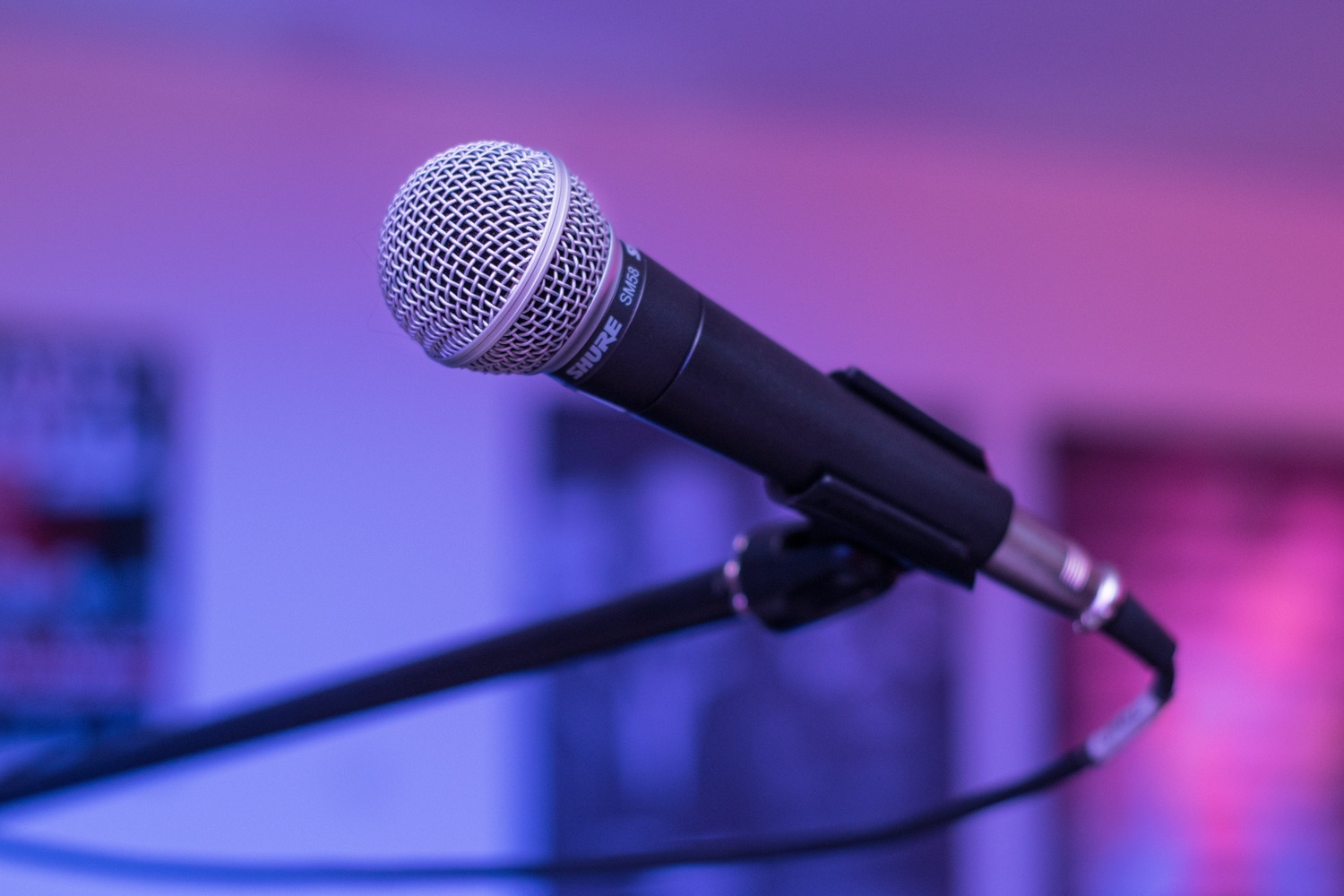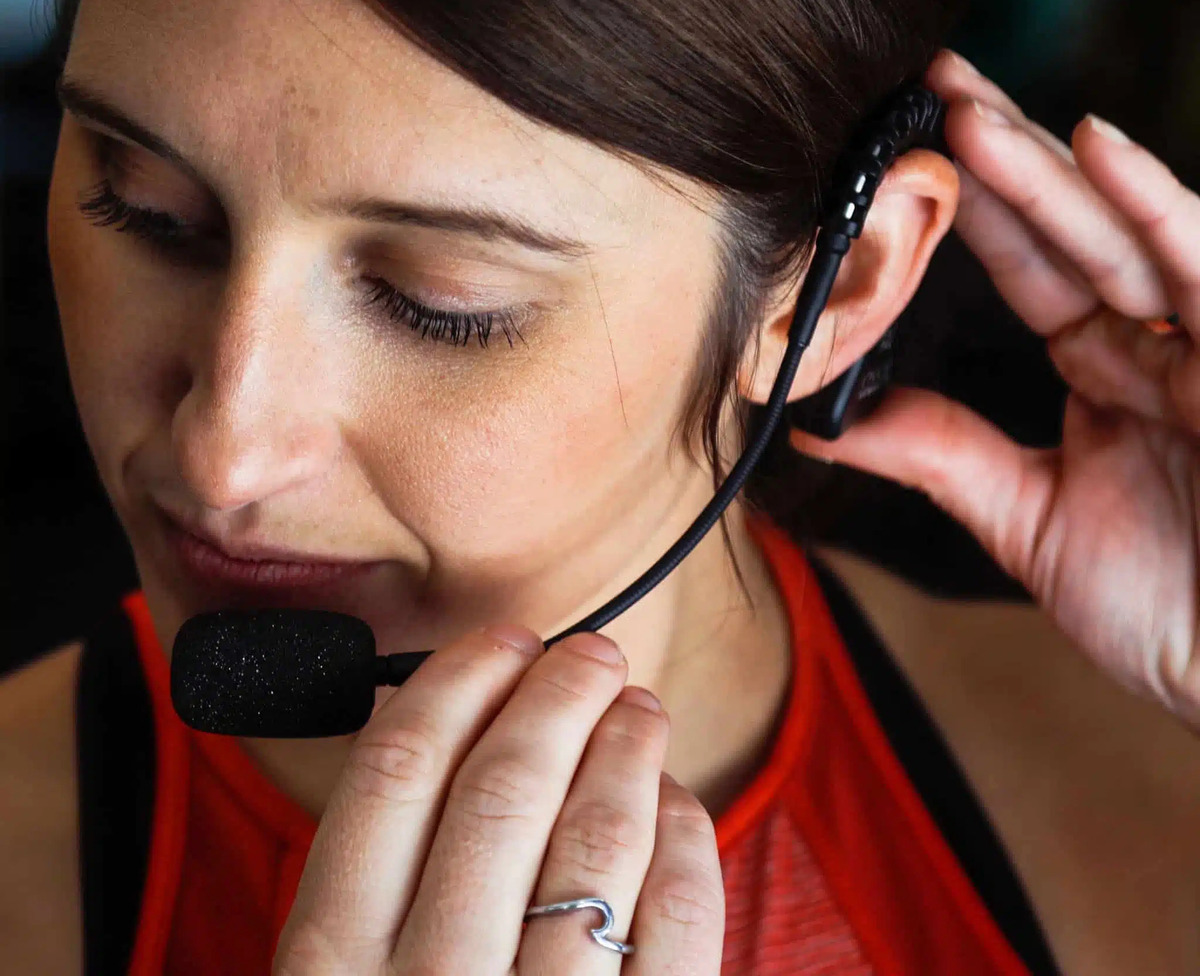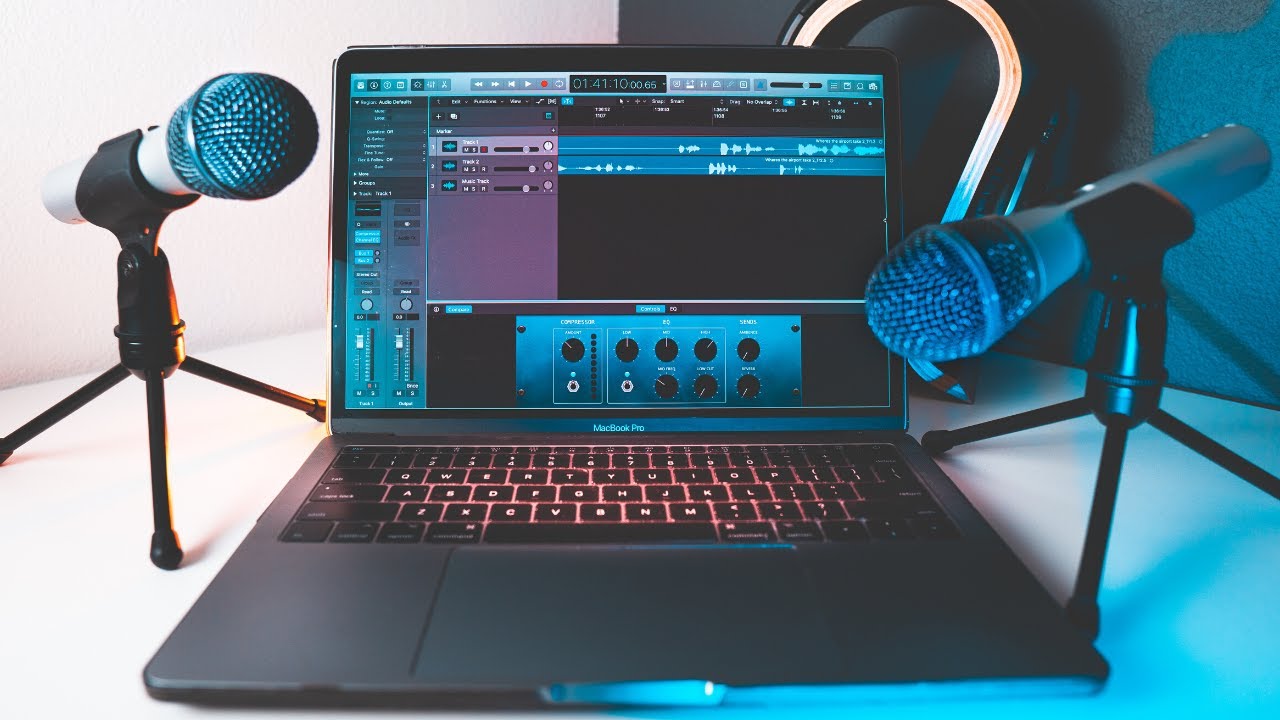Home>Devices & Equipment>Microphone>How To EQ Microphone


Microphone
How To EQ Microphone
Published: February 16, 2024
Learn how to EQ a microphone for optimal sound quality. Discover essential tips and techniques for improving your microphone audio.
(Many of the links in this article redirect to a specific reviewed product. Your purchase of these products through affiliate links helps to generate commission for AudioLover.com, at no extra cost. Learn more)
Table of Contents
Introduction
Welcome to the world of microphones and audio engineering! Whether you're a podcaster, musician, content creator, or audio enthusiast, understanding how to EQ a microphone is a crucial skill that can significantly enhance the quality of your recordings. EQ, short for equalization, is the process of adjusting the balance between different frequency components within an audio signal. When applied to microphones, EQ allows you to sculpt the tonal characteristics of your recordings, ensuring that the sound accurately reflects the intended sonic profile.
In this comprehensive guide, we'll delve into the art and science of EQ for microphones, exploring various techniques and considerations to help you achieve optimal audio results. From understanding the fundamentals of EQ to selecting the right microphone for specific applications and mastering basic and advanced EQ techniques, this article will equip you with the knowledge and skills to elevate your audio recordings to new heights.
Whether you're aiming to capture the warmth of a vocal performance, the clarity of a podcast dialogue, or the full spectrum of an instrumental arrangement, mastering the art of EQ for microphones is an essential step toward achieving professional-grade audio production. So, let's embark on this sonic journey together and unlock the secrets of EQ for microphones.
Understanding EQ
Before delving into the specifics of EQ for microphones, it’s essential to grasp the fundamental principles of equalization. EQ is a powerful tool that allows you to manipulate the frequency content of audio signals, shaping the tonal characteristics to achieve a desired sonic profile. In essence, it enables you to boost or attenuate specific frequency ranges, thereby influencing the overall timbre and balance of the sound.
When applied to microphones, EQ can address a myriad of sonic imperfections and enhance the overall clarity and fidelity of recordings. Whether it’s taming boomy low frequencies, accentuating the presence of vocals, or adding sparkle to instruments, understanding EQ empowers you to sculpt the sonic landscape with precision and artistry.
EQ operates across the audible frequency spectrum, typically categorized into three primary bands: low (bass), midrange, and high (treble). Each band encompasses a range of frequencies that contribute to the overall tonal character of the audio. By manipulating these bands, you can tailor the sound to suit the specific requirements of your recording, whether it’s removing unwanted rumble and muddiness or bringing out the natural brilliance of the source.
Moreover, EQ is not merely about boosting or cutting frequencies; it’s about achieving a harmonious balance that complements the source material. By understanding the interplay between different frequency ranges and their impact on the perceived tonal quality, you can wield EQ as a creative tool to imbue your recordings with depth, clarity, and character.
As we venture deeper into the realm of EQ for microphones, this foundational understanding of equalization will serve as the bedrock upon which we build our expertise. Armed with this knowledge, you’ll be primed to explore the nuances of microphone EQ with confidence and creativity, unlocking the full potential of your audio recordings.
Choosing the Right Microphone
When it comes to EQ for microphones, selecting the right microphone for your specific recording needs is a critical first step. The choice of microphone plays a pivotal role in capturing the sonic characteristics of the source, and different microphones exhibit unique frequency responses and tonal qualities. Understanding the distinct attributes of various microphone types is essential for making informed decisions when applying EQ to achieve the desired audio results.
Dynamic microphones, renowned for their robustness and versatility, are well-suited for capturing loud sound sources such as amplified instruments and live vocals. They tend to have a relatively flat frequency response, making them less sensitive to high-frequency nuances. When using dynamic microphones, EQ adjustments can be employed to enhance the presence and clarity of the recorded sound, especially in scenarios where fine-tuning the tonal balance is necessary.
Condenser microphones, on the other hand, are revered for their sensitivity and transparent sound reproduction, making them ideal for capturing detailed nuances in vocals, acoustic instruments, and studio environments. With their extended frequency response and nuanced sonic characteristics, condenser microphones offer a broader canvas for EQ manipulation, allowing for precise sculpting of the audio spectrum to achieve a desired tonal aesthetic.
Furthermore, ribbon microphones, prized for their smooth and vintage tonal qualities, impart a distinct coloration to the sound and are often favored for capturing the warmth of acoustic instruments and vocals. Understanding the inherent tonal characteristics of ribbon microphones is crucial when applying EQ, as their unique frequency response may require nuanced adjustments to achieve optimal results without compromising their inherent sonic charm.
By carefully considering the sonic attributes and intended application of different microphone types, you can make informed decisions when applying EQ to tailor the sound to your creative vision. Whether you’re aiming to accentuate the punchiness of a dynamic microphone, unveil the nuances of a condenser microphone, or preserve the vintage allure of a ribbon microphone, choosing the right microphone sets the stage for effective EQ manipulation and exceptional audio outcomes.
Basic EQ Techniques
Mastering basic EQ techniques is essential for achieving polished and professional-sounding recordings. Whether you’re addressing common sonic issues or aiming to enhance the tonal characteristics of your audio, these foundational EQ techniques serve as invaluable tools in your sonic arsenal.
- High-pass and Low-pass Filters: High-pass filters allow higher frequencies to pass through while attenuating lower frequencies, making them ideal for removing rumble and low-frequency noise from recordings. Conversely, low-pass filters enable the passage of lower frequencies while attenuating higher frequencies, effectively taming excessive sibilance and harsh high-end content.
- Parametric EQ: Parametric EQ empowers you to precisely target and adjust specific frequency bands, typically offering control over frequency, bandwidth (Q), and gain. This versatile tool is invaluable for surgically sculpting the tonal balance of individual instruments and vocals.
- Shelving EQ: Shelving EQ allows for broad adjustments to the tonal balance by boosting or attenuating frequencies above or below a specified cutoff point. Utilizing shelving EQ, you can add warmth to vocals with a gentle low-end boost or impart airiness to instruments with a high-frequency lift.
- Notch Filtering: Notch filters are designed to target and attenuate a narrow band of frequencies, making them effective for addressing specific resonances or eliminating unwanted frequencies that may detract from the overall clarity of the audio.
By mastering these basic EQ techniques, you’ll gain the proficiency to address common sonic anomalies, sculpt the tonal balance of your recordings, and elevate the overall clarity and impact of your audio productions. These foundational techniques serve as the building blocks for more advanced EQ manipulation, laying the groundwork for achieving professional-grade results and unlocking the full potential of your microphone recordings.
Advanced EQ Techniques
As you delve deeper into the realm of EQ for microphones, mastering advanced EQ techniques can significantly elevate the sonic quality and artistic expression of your recordings. These techniques offer a nuanced approach to sculpting the tonal characteristics of your audio, providing greater control and finesse in shaping the sound to align with your creative vision.
- Mid-Side EQ: Mid-Side EQ allows for independent processing of the mid (center) and side (stereo) components of a stereo signal. This advanced technique enables precise manipulation of the stereo image and tonal balance, offering unparalleled control over the spatial characteristics and overall clarity of the recording.
- Dynamic EQ: Dynamic EQ combines the precision of traditional EQ with dynamic processing, allowing you to dynamically adjust specific frequency bands in response to the audio signal’s amplitude. This technique is particularly effective for taming resonant peaks, controlling harsh transients, and maintaining a consistent tonal balance across varying input levels.
- Linear Phase EQ: Linear phase EQ minimizes phase distortion, making it an ideal choice for transparently shaping the tonal balance of audio without introducing phase artifacts. This advanced EQ technique is well-suited for mastering applications and scenarios where preserving the integrity of the original phase relationship is paramount.
- Match EQ: Match EQ enables you to capture the tonal characteristics of a reference audio source and apply its spectral profile to another recording. This sophisticated technique is valuable for achieving tonal consistency across multiple tracks, matching the sonic attributes of different microphones, or emulating the sonic signature of a reference recording.
By incorporating these advanced EQ techniques into your audio engineering toolkit, you’ll gain the ability to finesse the tonal nuances of your recordings with precision and artistry. Whether it’s sculpting the spatial imaging, dynamically shaping the tonal balance, preserving phase coherence, or matching the sonic characteristics of reference material, these techniques offer a wealth of creative possibilities to elevate your microphone recordings to new heights of sonic excellence.
Conclusion
Congratulations on embarking on this sonic journey into the realm of EQ for microphones. Throughout this comprehensive guide, we’ve explored the essential principles, techniques, and considerations for harnessing the power of EQ to elevate the quality and sonic character of your microphone recordings. From understanding the foundational aspects of EQ to mastering basic and advanced EQ techniques, you’ve gained valuable insights and skills to shape the tonal balance of your audio with precision and artistry.
By comprehending the fundamental role of EQ in manipulating the frequency content of audio signals, you’ve unlocked the potential to sculpt the sonic landscape, address sonic imperfections, and enhance the clarity and fidelity of your recordings. Furthermore, the knowledge of choosing the right microphone for specific applications has empowered you to make informed decisions when applying EQ, ensuring that the unique tonal characteristics of different microphone types are leveraged to achieve optimal sonic results.
As you continue to refine your expertise in EQ for microphones, mastering both basic and advanced EQ techniques will enable you to finesse the tonal nuances of your recordings with precision and artistry. Whether it’s employing high-pass and low-pass filters to address common sonic anomalies, delving into mid-side EQ for spatial manipulation, or harnessing the power of dynamic EQ for nuanced tonal control, you now possess a diverse array of tools to shape the sonic identity of your microphone recordings.
Armed with this newfound knowledge and skill set, you’re poised to embark on a sonic adventure, infusing your microphone recordings with depth, clarity, and character. Whether you’re capturing the emotive nuances of a vocal performance, the intricate details of an acoustic instrument, or the immersive ambiance of a live event, the art of EQ for microphones will serve as your creative ally in achieving professional-grade audio production.
So, as you venture forth into the realm of audio engineering and creative expression, may the art and science of EQ for microphones empower you to craft captivating sonic experiences and bring your creative vision to life with unparalleled clarity and impact.











